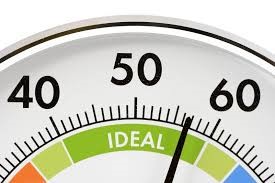High humidity

What To Look For:
Avoid high humidity (measure and record)
If no humidity meter is available, likely indicators of high humidity are similar to high temperature. Additional signs would be where paperwork etc in the building becomes damp. In cold outdoor temperatures, extremely high humidity will be visible as fog or mist when entering the building.
Additional information:
Avoid high humidity, above 60%.
If no humidity meter is available, likely indicators of high humidity are similar to high temperature. Additional signs would be where paperwork etc in the building becomes damp. In cold outdoor temperatures, extremely high humidity will be visible as fog or mist when entering the building.
Suggestions:
Automated system checks:
- Follow specialist ventilation advice for additional air circulation measures in the buildings, eg temporary vents, altering roof vents, opening doors/windows, etc. – on fully controlled buildings, altering airflow can reduce effectiveness of automatic settings
- Check ventilation settings to ensure that all pens will receive sufficient air changes in order to reduce build-up of humidity and temperature
- Pay special attention to ventilation systems when cleaning buildings prior to restocking to ensure all fans are working at the correct capacity for size of new pigs
- Check and calibrate thermostats regularly to ensure correct information is fed back to the controls
- If settings can be altered to manage daytime humidity better, ensure that correct settings are resumed overnight so that pigs do not receive direct cold air over the lying area
- Check seals inside buildings (eg ceiling and wall joins) to reduce air leakage. Gaps in the seals will reduce the efficiency of powered systems, and can also create unwanted draughts and downflows which will also disturb the pigs)
Additional measures
- Consider additional measures to assist ventilation, eg back-up fans
- Use compressed air to remove dust build up from vents and fans
- Clear vegetation around air inlets and outlets of the building and clear away any other equipment which may be restricting air intake or outflow
- If possible, take a few minutes to sit or crouch in the pens (at pig height) to see what the conditions are like for the pigs. Corridors and spaces above pen height can give a deceptive idea of the temperature, atmosphere and humidity at pig height
- Consider thinning pigs earlier to reduce pig numbers in the building (which will contribute to high temperature and humidity). Having fewer pigs per pen will allow more pigs to lie on their sides to help cool themselves against the floor
- Additional measures such as misting or spraying can be useful to reduce temperature, but air movement is vital to reduce humidity build-up
- Ensure correct drainage from under the pens to avoid build-up of humidity from effluent in the slurry pit, and correct ventilation of the pit
- Shade air inlets to reduce intake of warm air
- Ensure insulation is well maintained to reduce direct heat into the building
- If misting or spraying systems are being used, ensure that air circulation and fresh air input are high enough to maintain comfortable levels of humidity
- Check drainage of pit to ensure that liquid waste below the pens is not contributing to high humidity in the building. Emptying the pit will also increase the space available for circulating air in the building
- Ensure that buildings are well ventilated after cleaning and disinfecting before pigs are put back in
- Ensure that correct ventilation settings are resumed overnight so that pigs do not receive direct cold air over lying area, and are in a comfortable thermal environment
Additional material:
Defra code of recommendation for pigs - https://www.gov.uk/government/uploads/system/uploads/attachment_data/file/69369/pb7950-pig-code-030228.pdf
Action for productivity 21. Ventilation http://pork.ahdb.org.uk/media/2048/Action-21-Ventilation.pdf
AHDB Pork Ventilation Guide http://pork.ahdb.org.uk/environment-buildings/pig-buildings-housing-development/ventilation/ventilating-pig-buildings-guide/
Action for productivity 3: Heat Stress (Indoor) –
http://pork.ahdb.org.uk/media/2044/Action-3-Heat-stress-indoors.pdf
Environmental Management for Healthy Pig Production - http://pork.ahdb.org.uk/media/39675/environmental-management-for-healthy-pig-production.pdf
